Abstract
The ECF-A acidic tetrapeptides Val-Gly-Ser-Glu, Ala-Gly-Ser-Glu and the analogue Val-Gly-Asp-Glu were selectively chemotactic for human eosinophils over a narrow dose range although eosinophils from different individuals varied in their dose-response pattern. Histamine abrogated the chemotactic properties of the individual tetrapeptides. When Val-Gly-Ser-Glu and Ala-Gly-Ser-Glu were combined in various concentrations the resultant chemotaxis was either negligible or no greater than that produced when each peptide was tested separately. Val-Gly-Ser-Glu and Ala-Gly-Ser-Glu both promoted eosinophil accumulation when applied to the abraded skin of man or i.d. to the marmoset. Biopsies of marmoset skin revealed that peptide-induced eosinophilia was not associated with mast-cell degranulation. Histamine, which was chemotactic in vitro, did not lead to appreciable eosinophil accumulation in vivo, and combinations of histamine and the acidic tetrapeptides evoked little or no cutaneous eosinophil infiltration either in man or the marmoset. These studies suggest that there is a complex interaction between histamine and the ECF-A tetrapeptides; however, the tetrapeptides alone can promote the recruitment and localization of eosinophils by a mechanism apparently independent of mast-cell degranulation.
Full text
PDF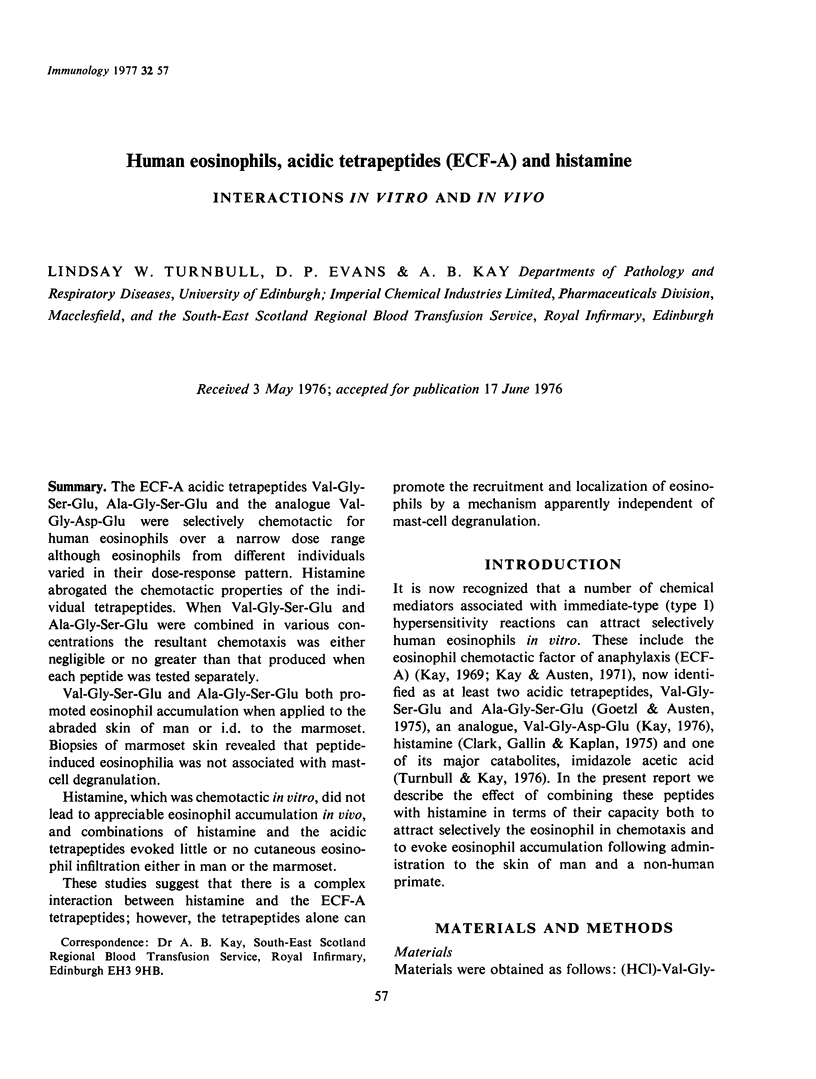
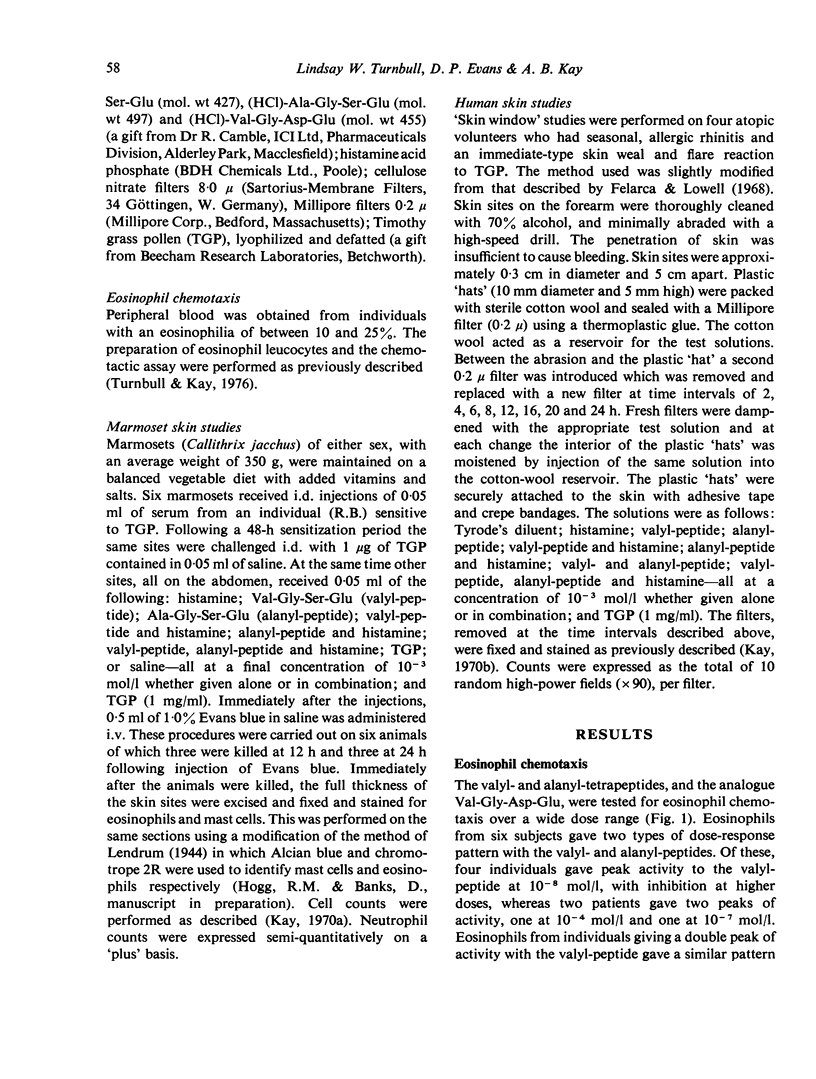

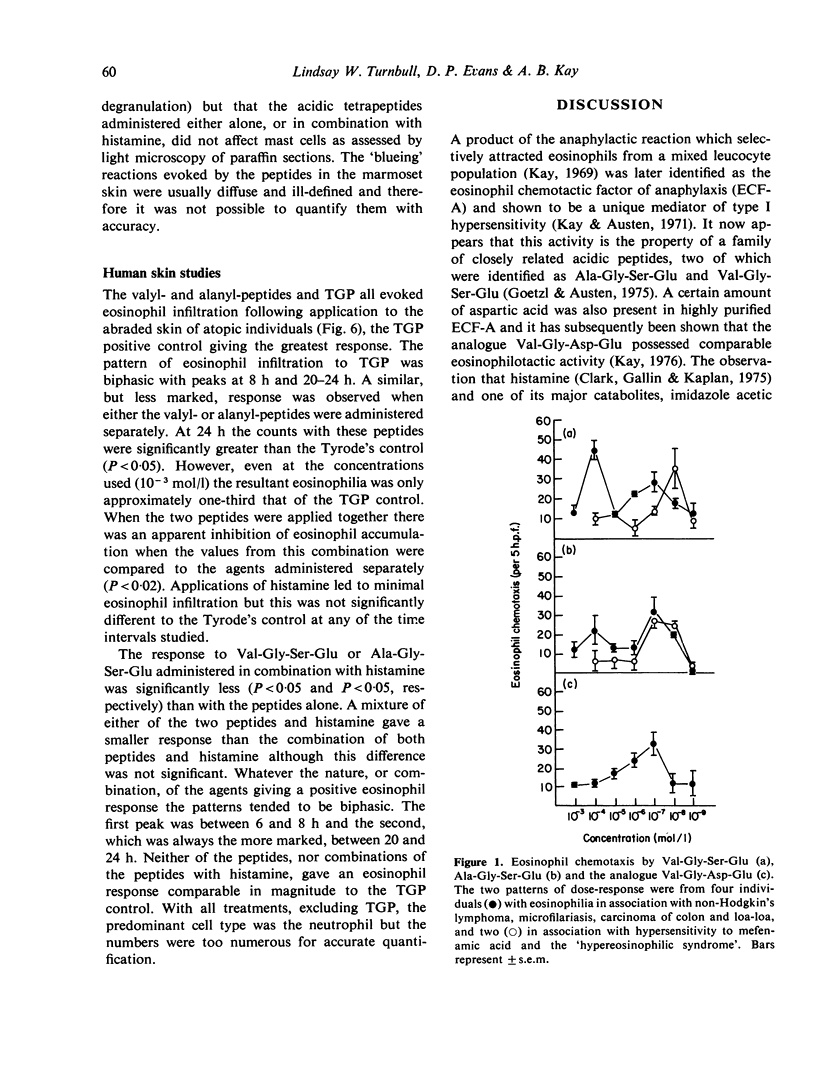
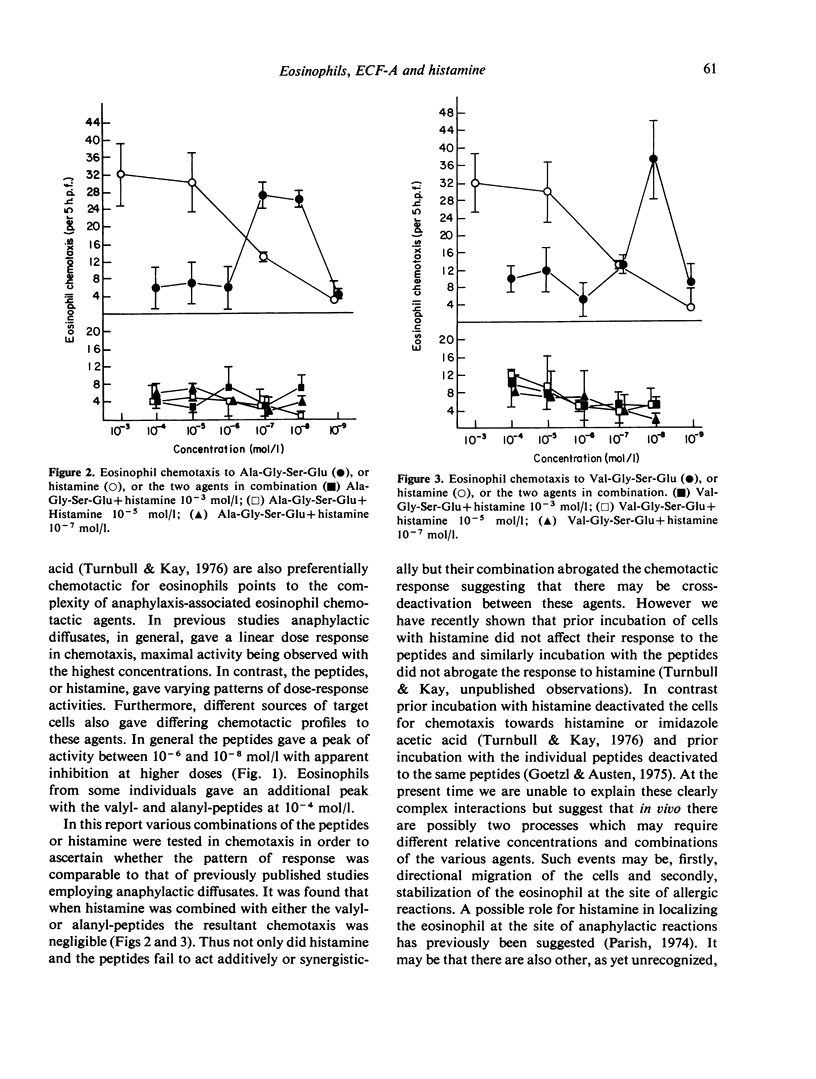
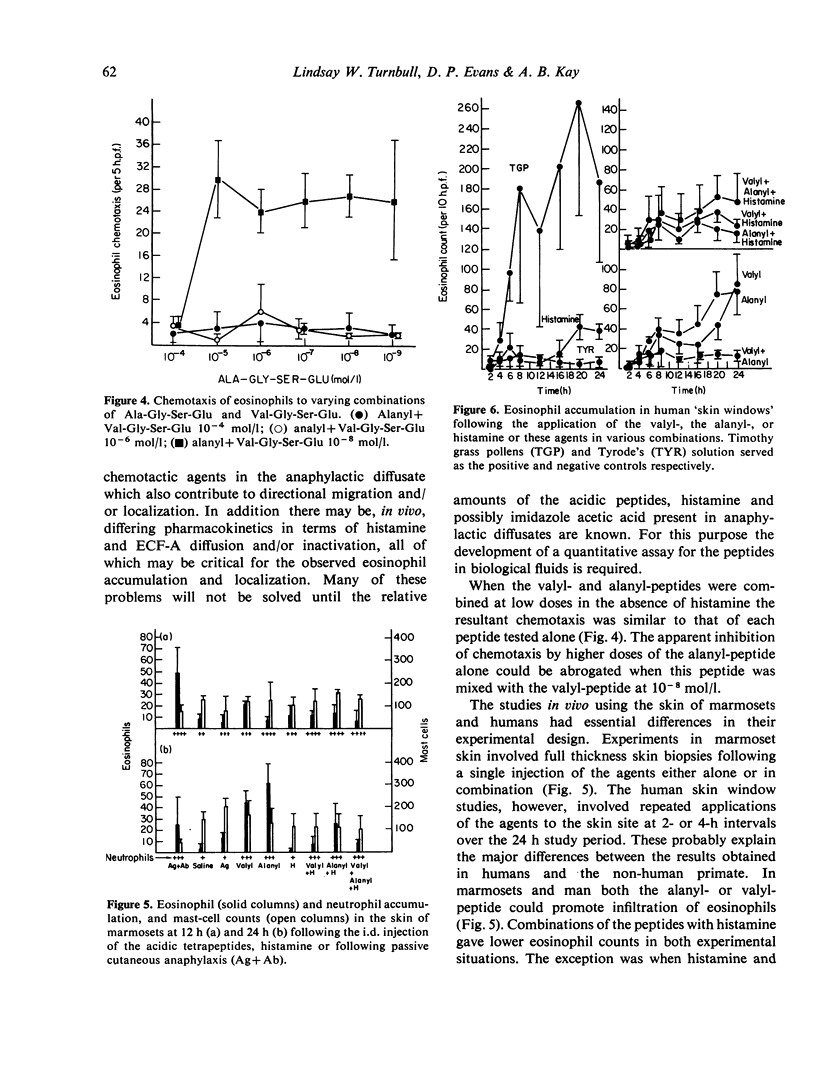
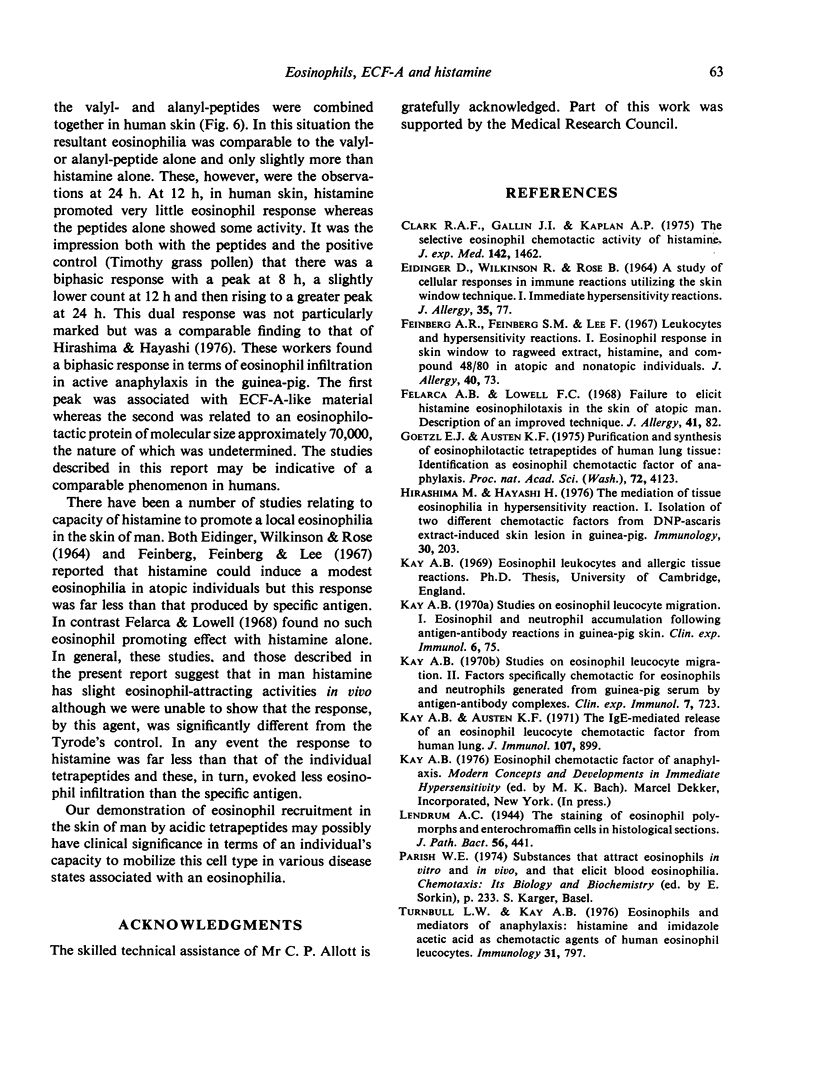
Selected References
These references are in PubMed. This may not be the complete list of references from this article.
- Clark R. A., Gallin J. I., Kaplan A. P. The selective eosinophil chemotactic activity of histamine. J Exp Med. 1975 Dec 1;142(6):1462–1476. doi: 10.1084/jem.142.6.1462. [DOI] [PMC free article] [PubMed] [Google Scholar]
- Eosinophils and mediators of anaphylaxis. Histamine and imidazole acetic acid as chemotactic agents for human eosinophil leucocytes. Immunology. 1976 Nov;31(5):797–802. [PMC free article] [PubMed] [Google Scholar]
- Goetzl E. J., Austen K. F. Purification and synthesis of eosinophilotactic tetrapeptides of human lung tissue: identification as eosinophil chemotactic factor of anaphylaxis. Proc Natl Acad Sci U S A. 1975 Oct;72(10):4123–4127. doi: 10.1073/pnas.72.10.4123. [DOI] [PMC free article] [PubMed] [Google Scholar]
- Hirashima M., Hayashi H. The mediation of tissue eosinophilia in hypersensitivity reaction. I. Isolation of two different chemotactic factors from DNP-Ascaris extract-induced skin lesion in guinea-pig. Immunology. 1976 Feb;30(2):203–212. [PMC free article] [PubMed] [Google Scholar]
- Kay A. B., Austen K. F. The IgE-mediated release of an eosinophil leukocyte chemotactic factor from human lung. J Immunol. 1971 Sep;107(3):899–902. [PubMed] [Google Scholar]
- Kay A. B. Studies on eosinophil leucocyte migration. I. Eosinophil and neutrophil accumulation following antigen-antibody reactions in guinea-pig skin. Clin Exp Immunol. 1970 Jan;6(1):75–86. [PMC free article] [PubMed] [Google Scholar]
- Kay A. B. Studies on eosinophil leucocyte migration. II. Factors specifically chemotactic for eosinophils and neutrophils generated from guinea-pig serum by antigen-antibody complexes. Clin Exp Immunol. 1970 Nov;7(5):723–737. [PMC free article] [PubMed] [Google Scholar]


